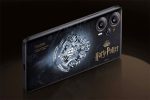Mercedes-Benz presented the 190 in December 1982. The new Baby-Benz was a mid-size saloon, designated internally as the compact class and positioned below the E-Class and S-Class. The man responsible for the design was Bruno Sacco. To reduce fuel consumption, the engineers optimized the aerodynamics of the body and also used high-strength sheet steel and other innovative materials to reduce the weight of the car. As a result, the 190 weighed just 1180 kilograms.
The 190 had a revolutionary new chassis design, developed specifically for the new model. The main feature was the multi-link independent rear suspension. Each of the rear wheels was located by five independent links for optimum wheel control, with lateral and longitudinal forces effectively balanced in all driving situations. This improved steering precision and ensured very well-behaved handling characteristics. The new rear axle design was also lighter and more compact than its predecessors. The front axle featured shock-absorber struts located by individual triangular wishbones and anti-dive control. This gave the W 201 excellent straight-line stability, and being a relatively flat structure it also left a lot of space under the hood.
The Mercedes-Benz 190 was built in Sindelfingen and Bremen plants. Production began in Sindelfingen in 1992, with the assembly line in the Bremen factory starting in November 1983. The first two models, the 190 and 190 E were both petrol-powered and fitted with 1997cc four-cylinder engines. The 190 with a carburettor delivered 90 hp, while the 190 E with a petrol injection offered 122 hp. This was the first time the Mercedes-Benz engineers used the mechanical electronically-controlled Bosch KE-Jetronic injection system. Just one year later, the 190 D came along with a completely newly developed four-cylinder diesel engine with a displacement of 1997cc. In 1984 the new 190 E 2.3-16 made its debut at the top end of the model series. The four-cylinder engine with 2299cc displacement produced 185 horsepower. Acceleration from standstill to 100 km/h took just 7.5 seconds and the top speed was 230 km/h.
In 1985, the specifications of the compact class were extended by the addition of 15-inch wheels, electrically heated windshield wiper nozzles and an eccentric-sweep windshield wiper with a significantly larger swept area. From September 1985, power steering and electrically heated exterior mirrors were fitted as standard on all models. Also two new models were added to the series. The 190 D 2.5 with a five-cylinder diesel and the 190 E 2.6 with six-cylinder petrol. In combination with a five-speed manual transmission, the 2566cc petrol engine delivered 166 hp and accelerated the car from standstill to 100 km/h in just 8.2 seconds. The top speed was 215 km/h. The external indications of the higher power of the 190 E 2.6 were twin exhaust pipes and the deeper and more steeply angled front apron with wider louvers. In September 1987, Mercedes-Benz presented the 190 D 2.5 Turbo at the Frankfurt International Motor Show.
The updated Mercedes-Benz 190 compact class was unveiled at the Paris Motor Show in September 1988. The main focus was on the restyling of the body and the new-look interior. The most striking feature of the refined models was the protective side strips with integrated side skirt panelling. The front and rear spoilers reached further down and were combined with larger bumpers. The new front apron had been adopted from the 190 E 2.6 and was now used on all models to reduce the lift at the front axle. The purpose of new spoiler at the rear was to optimize the airflow outflow. The new interior design made the 190 more spacious and more comfortable for both driver and occupants, with more knee and head room in the rear and improved seats at both front and rear. In 1988 the new Mercedes-Benz 190 E 2.5-16 replaced the 2.3-liter unit as a top-of-the-range model.
The Sportline package, a new equipment variant for the 190, came onto the market in June 1989. The package was available for all models (standard in 190 E 2.6) and featured a suspension lowered by 21 mm, tauter springs and shock absorbers, 7J x 15 alloy wheels with wide tires in 205/55 R 15 format, and seating as in the 16-valve model. The era of petrol engines with carburettors at Mercedes-Benz ended in 1990. 190 E 1.8 was the new basic model with a 1797cc engine that delivered 109 hp with catalytic converter. It had been derived from the two-litre engine in the Mercedes-Benz 190 E by reducing the stroke, and used the same mechanically/electronically controlled Bosch KE-Jetronic injection system.
The 190 was refined for the last time in 1991. Among other things, all series variants now featured the ABS anti-lock braking system, except for the 190 D and 190 E 1.8 entry-level models. Mercedes-Benz presented another three special models of the W 201 in 1992, the last full year of production of the series. These Avantgarde versions of the 190 E 1.8, 190 E 2.3 and 190 D 2.5 were primarily designed to have a more youthful look, including pearl coat finishes in strong colours. In all, 4,600 units were built of these special models.
Production of the Mercedes-Benz 190 ended in Sindelfingen in February 1993 and in Bremen in August that same year. A total of 1,879,630 vehicles of the 201 Series were manufactured.










